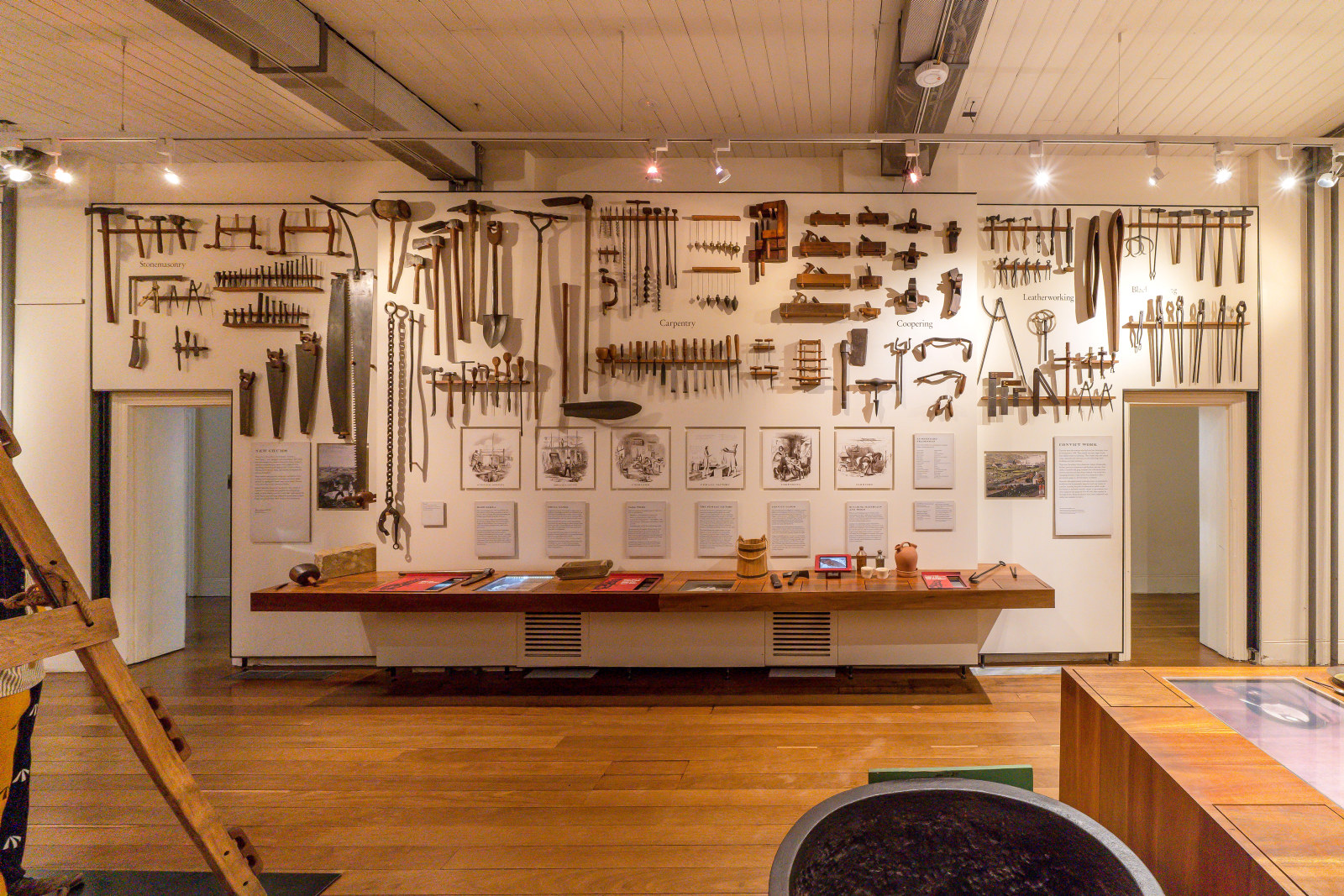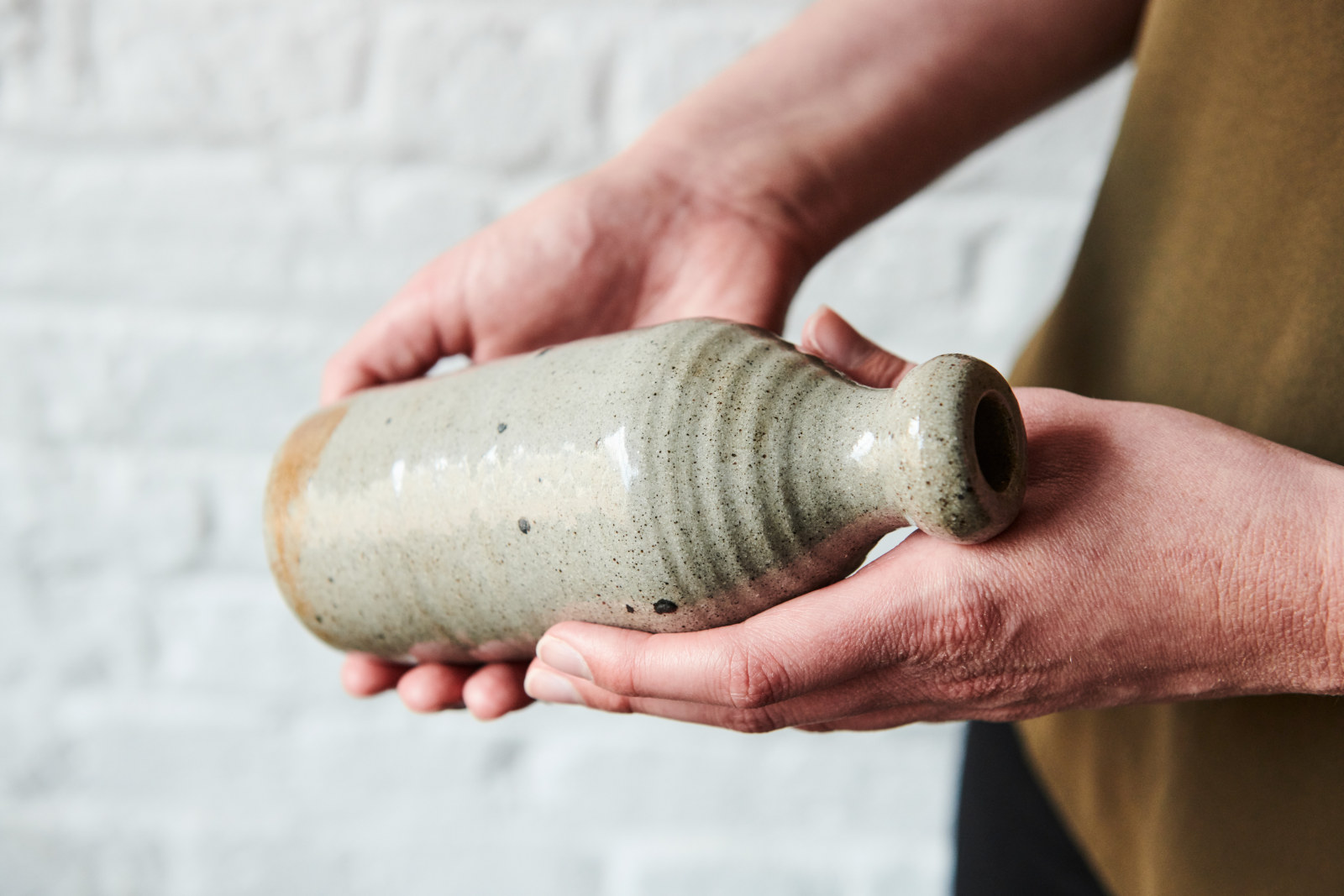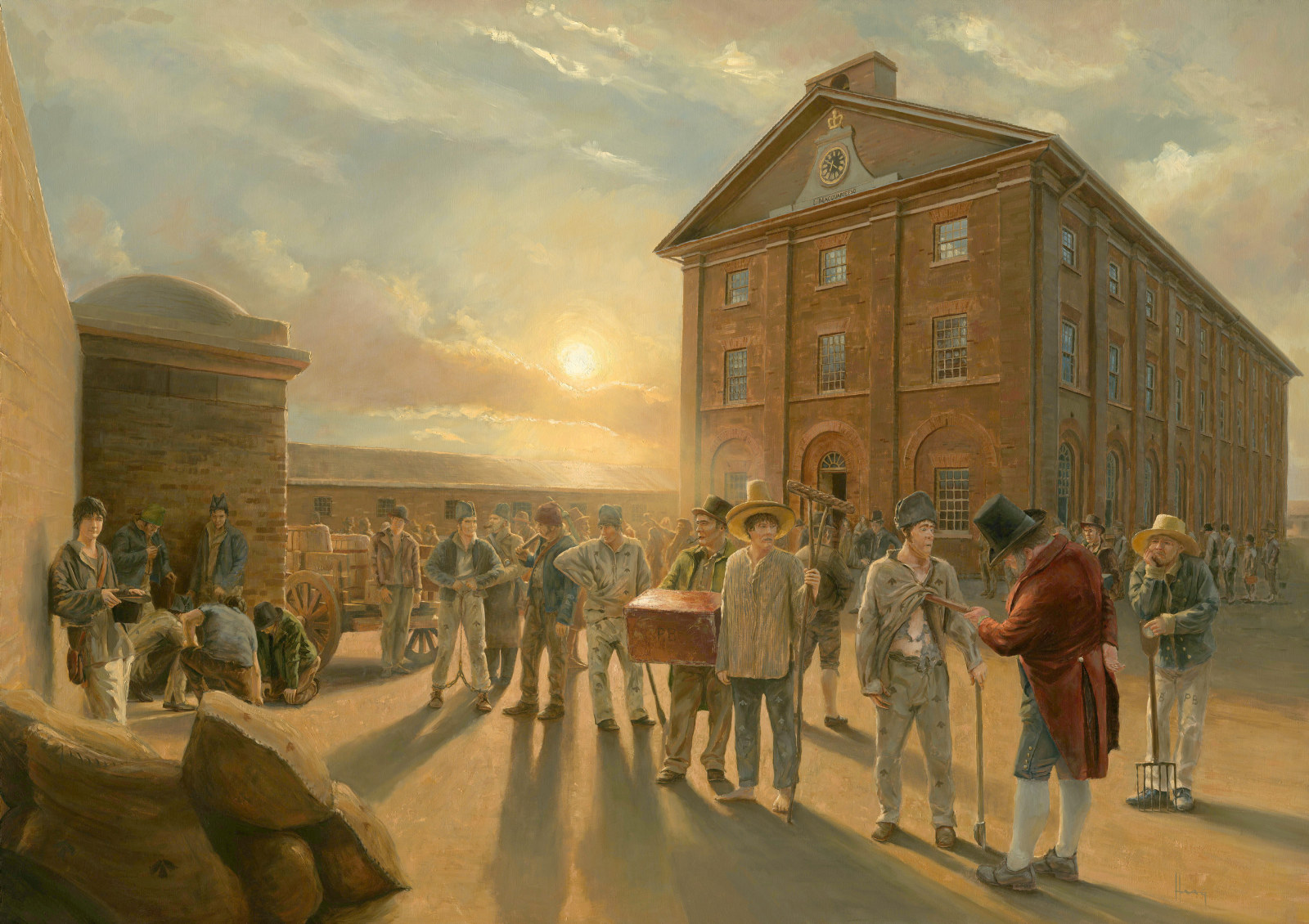Cooking cauldron
Board of Ordnance, 1846
The watery stew eaten by convicts at Hyde Park Barracks was boiled in giant communal cast iron pots like this one, into which the cooks threw the meat rations and any available vegetables such as cabbage, potato, onions or turnips. This pot, which can hold a few hundred litres of soup or stew, bears the year 1845, the broad arrow, and ‘B.O.’ for Board of Ordnance, the government department that issued all supplies to the convict establishments.
Barracks men were allocated to ‘mess’ groups of six, who ate together. One man from each mess organised the ration. Depending on how many men were in the Barracks at any time, there were between 100 and 250 mess groups. Observers known as ‘delegates’ were stationed in the kitchen to make sure convict cooks allocated the rations fairly. Although it was against the rules, convicts often bartered their rationed food for other things they wanted.
Published on
Related

Convict Sydney
Objects
These convict-era objects and archaeological artefacts found at Hyde Park Barracks and The Mint (Rum Hospital) are among the rarest and most personal artefacts to have survived from Australia’s early convict period

Learning resources
Explore our range of online resources designed by teachers to support student learning in the classroom or at home

Convict Sydney
Convict Sydney
From a struggling convict encampment to a thriving Pacific seaport, a city takes shape.